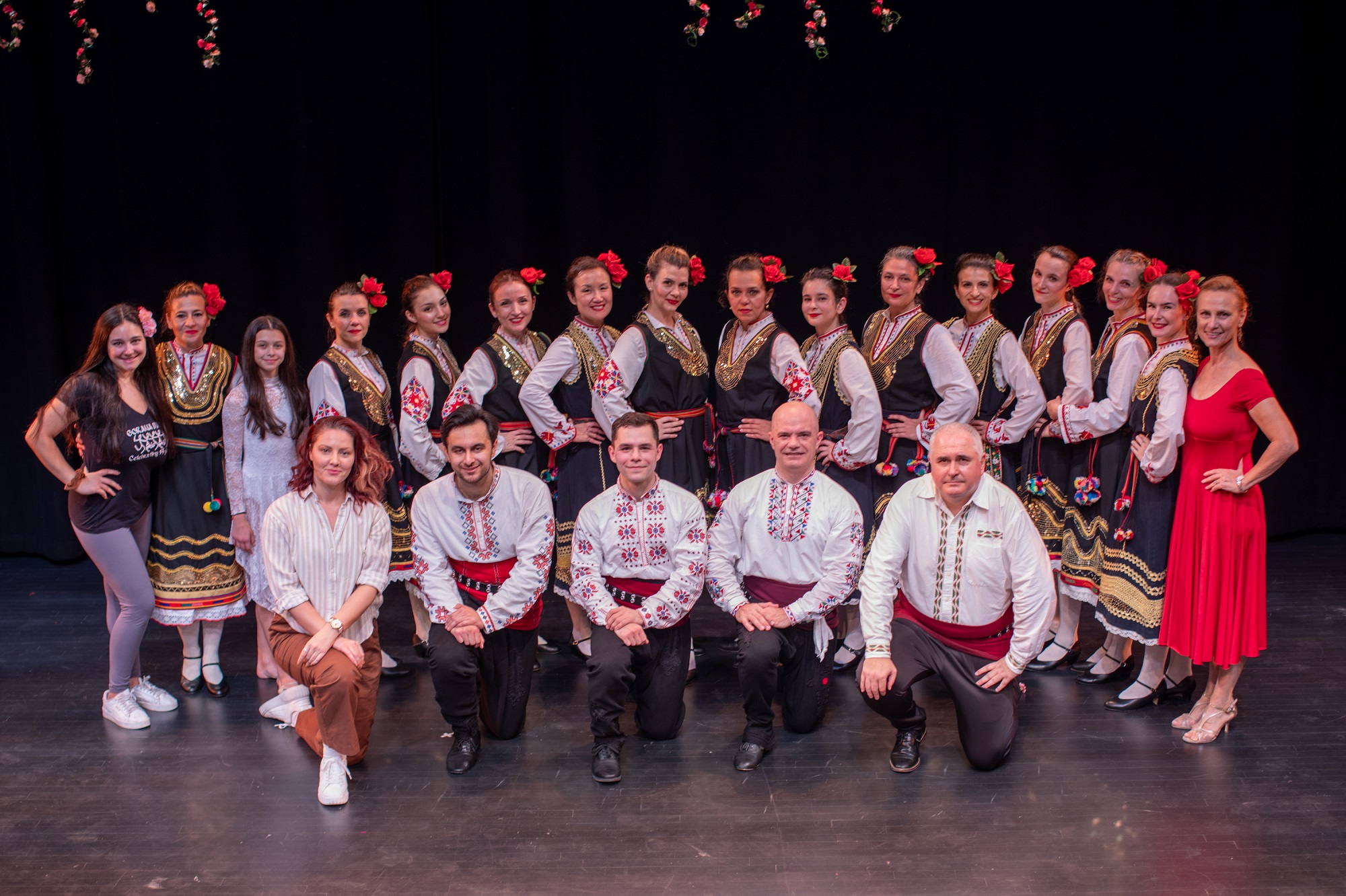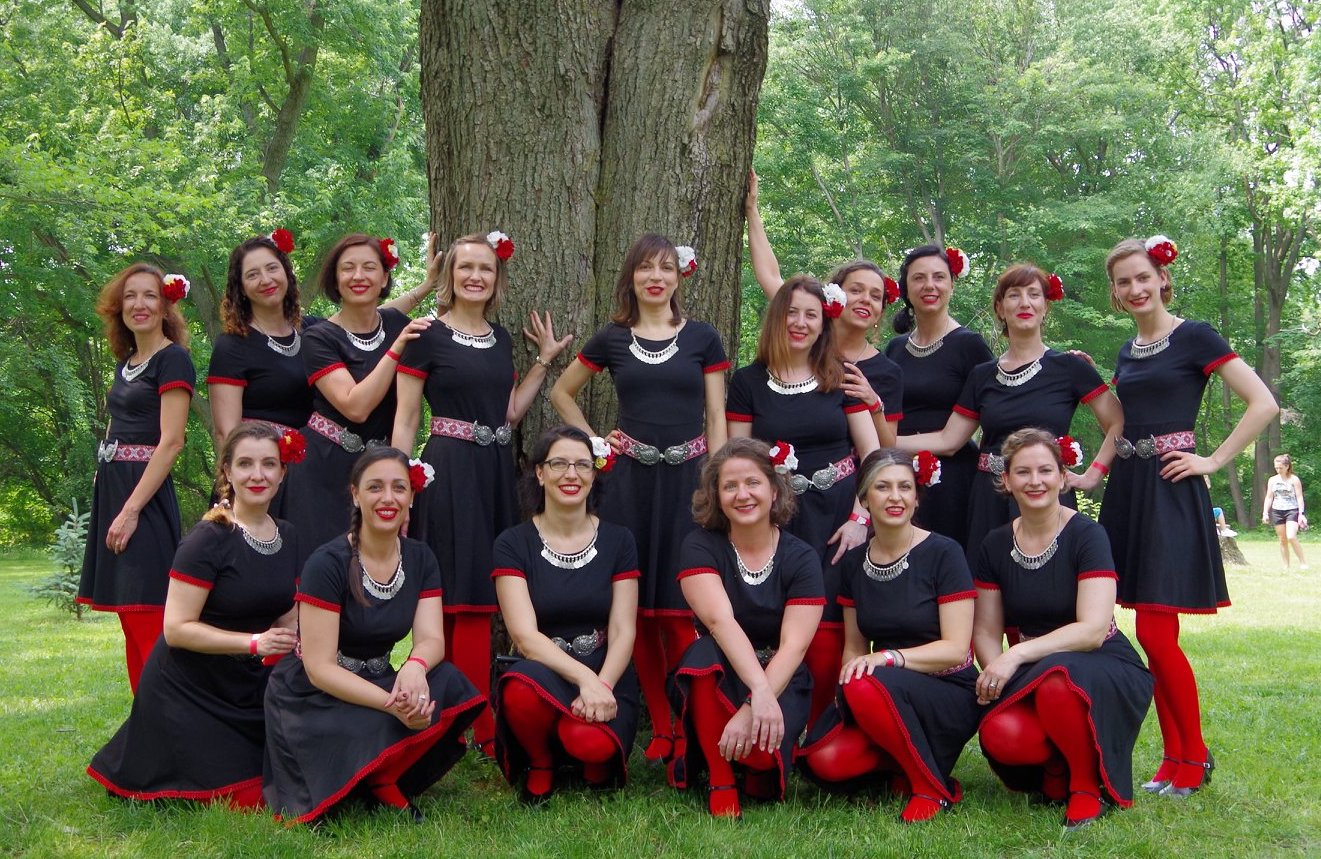1. Komitsko Libe – Gorana Dance
This dance narrative depicts two people who love each other and commit to their
relationship before witnesses. This dance is from the repertoire of the National
Ensemble of Bulgaria "Pirin".
Choreography by Kiril Haralampiev.
2. Kopanitsa – Gorana Dance
This dance represents the day when unmarried girls show up with flowers to be
given to their propsective man of interest.
Choreography by Elissaveta Iordanova.
3. Chapraz – Gorana Dance
A dance from the Thracian region performed by father and son (Chavdar and Evgeni).
Choreography by Elissaveta Iordanova.
4. Erkechki – Gorana Dance
This dance is from the repertoire of the National Ensemble of Bulgaria "Filip
Koutev". It shows the moments of the "lazaruvane" ritual, which is a pagan
ceremony for nature's rebirth and regeneration in the spring.
Choreography by Margarita Dikova.
5. Shira – Gorana Dance
This dance intepretation is based on the "Shira" circle dance from the Danube
river region.
Choreography by Elissaveta Iordanova.
6. Bulgarian Rhythms – Svetlin Stefanov
A piece performed on the tupan (drum).
7. Nestinarki – Algara Dance
This dance captures the ancient ritual of "nestinarstvo", where fire dancers known
as "nestinari" walk and dance on live embers. It originates from Thracian sun
worship asking the Sun God for health, prosperity and fertility in the new year.
Choreography by Galina Saharova.
8. Milking the Moon – Gorana Dance
This dance depicts a pagan ritual of the same name. In Bulgaria, women who were
believe to have special powers were asked the bring the fullness of the moon down
onto the crop field for a rich harvest. Historically, moon rituals were aligned
with planting and harvesting cycles to ensure that crops were sown and reapred at
optimal times. The moon is viewed as a rhythmic life of the cosmos and is believed
to govern all vital change.
Choreography by Elissaveta Iordanova.
9. Krivo Sadovsko – Gorana Dance
This dance is from Sadovo in the Thracian region. "Krivo" means "crooked" and
refers to the uneven meter of the dance. Gorana Dance's version is expanded with
intricate steps.
Choreography by Elissaveta Iordanova.
10. Buchimish – Gorana Dance
This is a social dance from the Pazardzhik province in central Bulgaria. It is in
15/16 meter. Gorana Dance's composition represents a ritual that names the queen
of roses.
Choreography by Elissaveta Iordanova.
11. Varnenski – Gorana Dance
This dance is from the Dobrudga region and embodies the work done in the field,
such as growing, ripening and sowing of the wheat harvest.
Choreography by Elissaveta Iordanova.
12. Bulgarian Rhythms – Svetlin Stefanov
A piece performed on the tupan (drum).
13. Stamena – Algara Dance
This dance belongs belongs to the category of modern, choreographed folk dances,
which is popular among the Bulgarian diaspora.
Choreography by Galina Saharova.
14. Sitno Shopsko – Algara Dance
This dance showcases movements and accents that are directed upwards, with a
pronounced desire to detach from the ground.
Choreography by Galina Saharova.
15. Enyov's Day – Gorana Dance
This dance depicts a Bulgarian custom at midsummer, called Enyov's Day, when girls
go out in the fields to gather herbs. The popular belief is that herbs have the
greatest healing power in midsummer. The girls collect flowers, twist them into
wreaths, and carry them home.
Choreography by Elissaveta Iordanova.
16. Marta's Dance – Gorana Dance
This dance invokes youthfulness, fun emotions, and a touch of humor.
Choreography by Elissaveta Iordanova.
17. Dilmano Dilbero – Gorana Dance
This is a duet dance to a well-known folk song.
18. Buenek – Algara Dance
This dance is one variation of the several that are done as a St. Lazarus Day
tradition.
Choreography by Galina Saharova.
19. Kopanitsa – Algara Dance
With its uneven beat, this dance is one of the most beloved dances among
Bulgarians.
Choreography by Galina Saharova.
20. Yovino – Gorana Dance
Bulgaria is famous for the many uneven beats in its folk dances. Yovino is one of
them and has two uneven beats that define the dance phrasing: 7/16 and 11/16. You
can recognize two strong beats on the 1 count and 6 count among the 8 counts in
total (1+2+3+4+5+6+7+8).
Choreography by Elissaveta Iordanova.
21. Ruchenitsa – Gorana Dance
This dance is one of the most famous folk dances in Bulgaria. It has a tempo that
almost encourages a dance-off between its dancers. It involves a waving of the
hands (ruce) which is what gives the dance its name.
Choreography by Elissaveta Iordanova.
22. Lazarki / Velikden – Gorana Dance
This dance is part of a ritual on Lazarus Day. Lazarus is a symbol of health and
longevity. Lazarus Day is celebrated on the eight day before Orthodox Easter
(Velikden) and is always on a Saturday. On this day, the "lazaruvane" custom is
performed by young girls called "lazarki". They go from house to house where they
dance, perform rituals, cleanse with their handkerchieves, and offer blessings for
health, happiness and prosperity. In the past, it was believed that girls who did
not partake in the custom would not get married. It was therefore necessary for
every girl in a village to partake in the custom at least once in her maidenhood.
Choreography by Elissaveta Iordanova.


